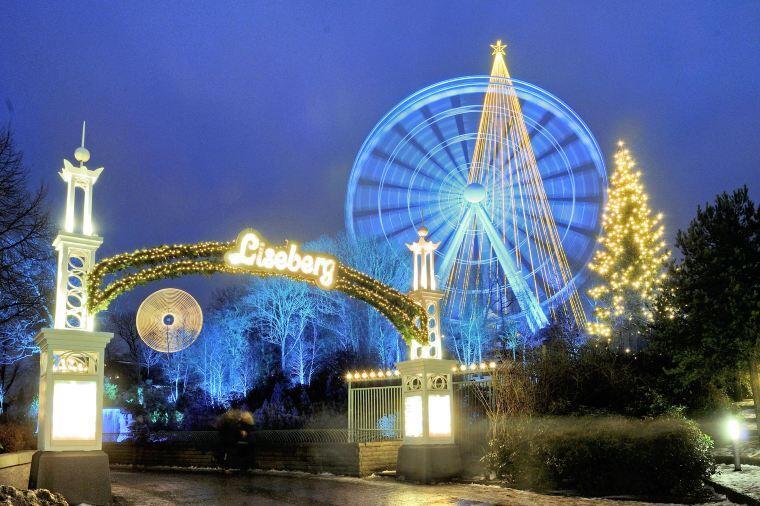Celebrate Tu Bishvat with Lessons from Gothenburg, World’s Greenest City
Growing up, I thought being Jewish meant planting trees. We commemorated a loved one with a tree in Israel after a death. We honored the birth of a boy with a cedar and a girl with an acacia. And on Tu BiShvat, the Jewish New Year of the Trees, we planted saplings in celebration of the earth.
Now that I’m (a lot) older and the planet is in a climate crisis, I know that Tu BiShvat, which begins this year on the evening of Sunday, January 16, is more than a tree-planting holiday. It’s a way to raise ecological awareness and to encourage others to honor the mother that feeds us all.
Environmental stewardship is a long-standing and distinctly Jewish notion. But some of us have never been taught how to accomplish it. You can find many lessons by visiting Gothenburg, Sweden, a city so green it has won the Global Destination Sustainability Index award for the past four years running. And you don’t even have to feel guilty about flying there—the airport is certified to the highest level of Carbon Accreditation.
Jews have lived in this seaport city since 1782. There's even a historic synagogue, the Conservative Gothenburg Synagogue at Stora Nygatan, designed by German architect August Krüge in 1855.
Located on the southwest coast of Sweden, Gothenburg is the second-largest city in the country. It’s the seat of Volvo, founded in 1927, and as such, actually became an environmental hazard for decades. But recognition of that in the 1980s spurred officials to clean up the water and air pollution.
Committed to becoming fossil-fuel independent by 2030, the city government has encouraged innovation by issuing bonds, certificates, and awards to industries, businesses, and venues that pledged to follow suit.
Today, roughly 95% of the city’s public transportation system, comprised of the signature blue-and-white trams that crisscross the city, run on renewable fuel. As a result, Gothenburg residents have reduced their car usage to such a degree that they are the subject of sustainable mobility studies.
Aside from the good that does the environment—and the car reduction and ride sharing ideas it might inspire—Gothenburg’s outstanding public transportation makes it simple to tour the region. Buy a 24- or 72-hour pass to hop on and off whenever you like. The trams and buses take you from popular sites like the city’s four food halls to Liseberg, the nearly century-old amusement park powered by wind energy. The trams and buses will even take you out of Gothenburg to the archipelago islands for line-caught mackerel fishing, traditional lobster trapping, or seal-viewing through binoculars (all of which are done seasonally, on small boats, with minimal environmental harm).
Afterward, you can enjoy a meal at Tullhuset restaurant, where you might spot wild mink cavorting on the rocks below. If you go to Tullhuset at Christmas, you can also partake of the celebratory julbord, or holiday buffet. Julbords are popular all over the city, with variations appearing at Easter and midsummer. But the Christmas buffet at Tullhuset is delicious fun for Jews, especially those with an Ashkenazi background, because of the dozens of styles of pickled herring and cured gravlax—just like Bubbe used to make.
Back in town, dine at restaurants like Human and Natur, which serve organic, farm-to-table vegetables and fish caught by line-and-hook instead of bottom-dragging nets. (If you’re wondering why eateries carry names like these, look no further than the well compensated staff who work reasonable hours. It’s “humane.”)
You can also stay in one of Gothenburg’s many hotels that have been eco-certified, meaning that waste is converted into biogas. And you’ll enjoy cultural events at the large public venues, all of which are completely green, including the Opera House and Concert Hall.
Gothenburg doesn’t only focus on large, systemic changes—it also sweats the small stuff. For instance, in Kungsparken, a green space around the central canal, every single type of tree in Sweden is represented. Green space is so important here that every Gothenburg resident has an average of 274 square meters of it.
To help increase production of whatever’s planted in the many parks and green spaces, not to mention restaurant kitchen gardens, Gothenburg has installed large-scale native pollinator boxes all over the city. These boxes attract bees, wasps, and other insects, becoming homes and reproductive nests for them. This is actually an easy project to reproduce at home: You can buy “bee hotels” for your own gardens online, or you can make them yourself —Tu BiShvat fun for the whole family.
Gothenburg has also spawned inspiring independent business models like the mother-and-son-owned Icebug, a shoe company that uses algae to make foam padding for its soles. The company is not only climate-neutral, it offset all its carbon emissions in 2020 by 200 percent. The owners have also placed women in leadership roles and have worked with groups like Forest Femmes to make trail running safer for women.
In Gothenburg, recycling isn’t just for rubber soles and car tires. In general, “waste” is a four-letter word here, which is why you can find second hand stores throughout the city. Not that you’d think of this as thrift shopping—these boutiques are as thoughtfully designed as the upscale department stores. It’s just as delightful to browse here as it is in Haga Nygata, the charming old city quarters where the cobblestone streets are stuffed with boutiques and bakeries alike so that you can take fika—the traditional Swedish pastry and coffee break—to re-energize.
Finally, all over the city, wherever there’s construction, there’s also public art to jazz it up. Murals also brighten up the sides of contemporary buildings. The artists chosen to create them? People from underrepresented groups, such as women and people from ethic minority and LGBTQIA communities.
This Tu Bishvat, as we consider the importance of the environment, let’s all take a page from Gothenburg, a literal Tree of Life, which is showing the rest of the world just how green we can be.






